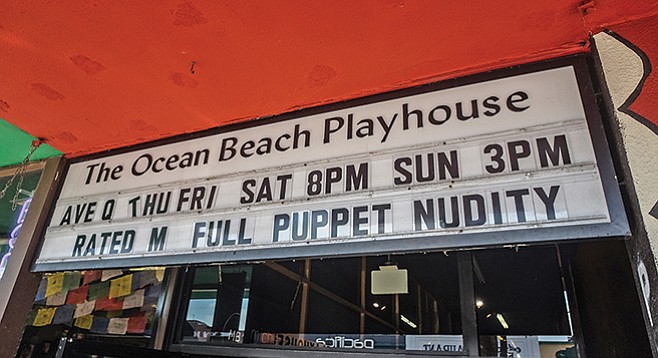 Facebook
Facebook
 X
X
 Instagram
Instagram
 TikTok
TikTok
 Youtube
Youtube

The trick to ventriloquism is paying attention to the position of your mouth and tongue when they make the 44 phonetic sounds of the English language. For example, to make an L sound, the tongue flicks down off the roof of the mouth, towards the back of your front teeth. To make an R, the tongue pulls back and widens, bracing against the back teeth on both sides.
Those types of sounds require relatively little ventriloquial skill, because all the moving parts remain inside the mouth, and there’s no need to move your lips. (It may take some practice to land the R without your jaw noticeably flexing.)
Other sounds require pushing air between your teeth and lips, so you always want to keep a front tooth resting on the back of your bottom lip, a little to one side, the top lip parted enough to let air escape as needed. The F sound will come easy enough; but the P sound gets challenging, and this is where we learn to fudge a few things.
We make a P by pursing our lips and almost spitting. To get around this, a ventriloquist learns to make forceful F sound, abruptly forcing a cushion of air between lip and tooth. The V and B sounds have a similar relationship. By fixing a section of lips together, you can softly buzz while making a V and get a sound close to a B. But you can make only so much of an M sound using this approach, so you reinforce it by simultaneously touching your tongue to the roof of your mouth for a nasally N sound. There are no hard rules to this, and it’s not always perfect, but adopting a funny dummy’s voice can hide flaws.
Now, spoken naturally, the W sound demands that your mouth start out pinched closed, yet finish wide open. But if you turn it into two syllables, ooh and ahh, and mash them together, you can approximate the W sound without moving anything.
That readies you for the dreaded Q. You have to hit the K off the back teeth and go straight into the ooh-ahh combination, bending back to whichever vowel comes next, and be ready for the next syllable. If you see a ventriloquist successfully drop the word ventriloquism, be impressed.
By projecting dialogue onto puppets, ventriloquists also throw their voices in a less literal way: by putting provocative material in someone else’s mouth. The notion That’s not me speaking, that’s the puppet frees the ventriloquist from polite constraints. That’s always part of the joke, that you can get away with saying damn near anything, if you say it through a puppet.
The puppeteers in Avenue Q, performing its famous puppet sex scene at OB Playhouse through September 30, aren’t ventriloquists, but actors. You’re meant to see their lips move, but the same principle applies.


The trick to ventriloquism is paying attention to the position of your mouth and tongue when they make the 44 phonetic sounds of the English language. For example, to make an L sound, the tongue flicks down off the roof of the mouth, towards the back of your front teeth. To make an R, the tongue pulls back and widens, bracing against the back teeth on both sides.
Those types of sounds require relatively little ventriloquial skill, because all the moving parts remain inside the mouth, and there’s no need to move your lips. (It may take some practice to land the R without your jaw noticeably flexing.)
Other sounds require pushing air between your teeth and lips, so you always want to keep a front tooth resting on the back of your bottom lip, a little to one side, the top lip parted enough to let air escape as needed. The F sound will come easy enough; but the P sound gets challenging, and this is where we learn to fudge a few things.
We make a P by pursing our lips and almost spitting. To get around this, a ventriloquist learns to make forceful F sound, abruptly forcing a cushion of air between lip and tooth. The V and B sounds have a similar relationship. By fixing a section of lips together, you can softly buzz while making a V and get a sound close to a B. But you can make only so much of an M sound using this approach, so you reinforce it by simultaneously touching your tongue to the roof of your mouth for a nasally N sound. There are no hard rules to this, and it’s not always perfect, but adopting a funny dummy’s voice can hide flaws.
Now, spoken naturally, the W sound demands that your mouth start out pinched closed, yet finish wide open. But if you turn it into two syllables, ooh and ahh, and mash them together, you can approximate the W sound without moving anything.
That readies you for the dreaded Q. You have to hit the K off the back teeth and go straight into the ooh-ahh combination, bending back to whichever vowel comes next, and be ready for the next syllable. If you see a ventriloquist successfully drop the word ventriloquism, be impressed.
By projecting dialogue onto puppets, ventriloquists also throw their voices in a less literal way: by putting provocative material in someone else’s mouth. The notion That’s not me speaking, that’s the puppet frees the ventriloquist from polite constraints. That’s always part of the joke, that you can get away with saying damn near anything, if you say it through a puppet.
The puppeteers in Avenue Q, performing its famous puppet sex scene at OB Playhouse through September 30, aren’t ventriloquists, but actors. You’re meant to see their lips move, but the same principle applies.
Comments